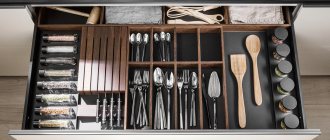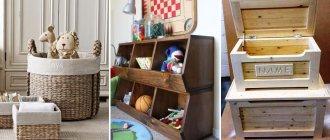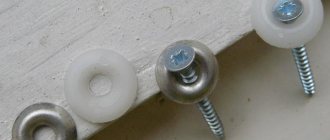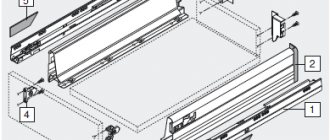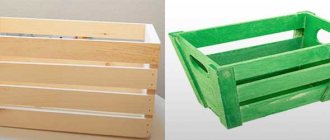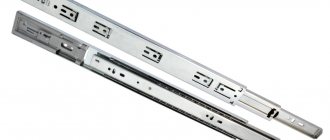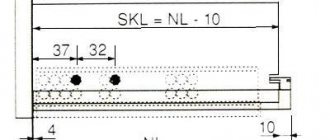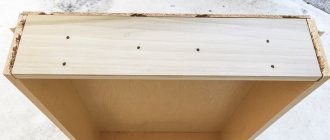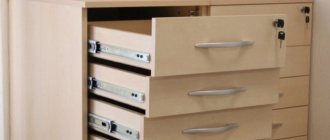Organizing a workspace in the kitchen means not only increased comfort and ease of use, but also safety. It is for this reason that it is necessary to think through every little detail, the same applies to the issue when choosing a tray for cutlery, which is most often displayed in furniture in the kitchen.
Every real housewife always has a large number of tools in her arsenal for preparing her favorite dishes and serving them.
This article will look at the basic designs of organizers, drying means used in trays and cutlery fittings. The data can be used when thinking about how to best store cutlery in the kitchen.
Features of cutlery trays in a kitchen drawer
Trays for spoons and forks are increasingly included in standard furniture. But when it is not there, you have to solve this issue yourself. because otherwise it is very inconvenient to dry and store cutlery.
The list doesn’t end with forks and spoons; brushes, tongs, corkscrews and other items also require storage space.
Today, most often there are 3 options for the location of this retractable structure:
- Top horizontal layout. In this case, the tray is located directly under the top of the drawers in the top drawer. Most often, it is made quite small in height (flat) - only a box with spoons and forks, as well as some other household appliances, can be placed in it. Thus, this arrangement does not take up useful free space.
- Lower horizontal - in this case, the drawer, including a storage structure, is located approximately at a height of 0.3-1 m from the floor. The main disadvantage is that if there are small children in the family, they can easily reach this box and take out dangerous devices.
- Vertical retractable pencil case - here you can arrange a wide variety of tools in several rows. This insert looks quite original on the external facade of kitchen cabinets.
Over the years, the number of devices has only increased, so the problem of distribution and organization is more relevant than ever.
In today's furniture, especially if it is represented by a fairly large kitchen set, there are configurations with several drawers. This allows you to conveniently arrange everything you need, carrying out the necessary sorting. So meat knives, mixer whisks, cake spoons and other rarely used tools can be stored separately (in a separate section). Whereas those that are used daily can be placed in a separate compartment.
According to its form:
- straight;
- corner;
- carousel.
Features of organizing cutlery in the kitchen
A cutlery drawer is a shallow compartment of a kitchen cabinet, equipped with a special stand (tray) for placing spoons, forks, knives and other items. In addition, if you install a special stand with a tray in it, the devices can be dried there.
As a rule, such a box has a retractable design and is located in the floor module of the furniture complex - in a cabinet or cabinet. In the first case, a drawer for cutlery is located under the tabletop and above the main compartment of the structure. In the second - in the middle of the element, at a level of 80-110 cm from the floor.
The lower module of the kitchen set can be equipped with not one, but several drawers for cutlery, arranged in a row vertically (under each other) or horizontally.
Cutlery insert materials
These products can be wooden, made of various types of plastic or stainless steel. Each material has its own distinctive features and prerogatives in use.
For example, a wooden tray may be exposed to moisture if items are placed there while they are wet.
Most often, a tray for storing cutlery and utensils is already included in the standard kitchen module.
When choosing plastic as a material, it is necessary to purchase only high-quality products, since such a tray itself can release harmful components. To avoid this drawback, it is enough to pay attention to accessories from trusted brands that do not allow themselves to use low-quality plastic.
Metal organizers are susceptible to moisture in the same way as wooden ones. Therefore, it is necessary to dry the accessories first before storing them.
Speaking of built-in drawers, most often it is located in the module itself - in a closet or pencil case.
Plastic inserts
Most often, it is plastic inserts that are used in pull-out cabinets. This is due to the fact that such a dryer is not exposed to moisture and does not allow it to pass out (if the design is made without holes). In this case, there is no negative impact on the material from which the retractable piece of furniture itself is made.
It is also worth noting that it is plastic pallets that have the most thoughtful combinations of compartments.
For ease of use, it is necessary that 1 product includes 6-8 compartments of different shapes and sizes:
- a separate, fairly large compartment for storing spoons and forks;
- a separate container for knives and other cutting and piercing products;
- a separate, small part in which dessert products, as well as tea and coffee spoons are stored;
- another compartment or stand in which it is convenient to store larger items, for example, ladles, potato masher, etc.;
- It is very convenient to have a container for storing small mixers and other hand-held kitchen utensils.
Quite a convenient position, since the housewife does not have to make unnecessary turns and movements, especially when it comes to limited space in the kitchen.
Wooden trays
Wooden trays have simpler shapes. But they look very attractive. Especially if the facades of the kitchen cabinets themselves are also made of this natural material.
In modern modules, there are increasingly several pull-out cabinets that allow you to properly organize cutlery and work utensils.
High-quality wood products are impregnated with special compounds that prevent swelling from exposure to moisture. Naturally, this option is the most expensive in price.
Metal trays
The metal used is stainless steel. This is the best option for those housewives who have absolutely no time to dry the dishes before putting them into the storage system.
The classic tray for spoons and forks in the drawer is in a horizontal position.
Kitchen Tray Options
The economical option looks quite presentable - the plastic from which such trays are made is perhaps the most common material.
It is durable, not affected by moisture, is not afraid of grease, and is easy to clean. An expensive option is wood. Such trays are made of natural wood and impregnated with protective oils to resist moisture. And yet wooden trays are not so popular. They require more careful handling, since if water gets in, they can lose their presentable appearance.
Another common material is stainless steel. This tray is not afraid of either moisture or acid, and it does not deform during use.
A tray for spoons and forks is a drawer divided into sections intended for the corresponding utensils. You should choose it according to the size of the box in which you plan to place this liner. The large tray has room for traditional knives, forks, spoons, as well as a whisk, slotted spoon, cake spatula, tea strainer and other kitchen items. Manufacturers even offer two-tier liners with maximum capacity.
For expensive cutlery - cupronickel or silver - trays with a velvet surface are available. The tray makes it possible to assemble your own set of cutlery, organize their storage and save your nerves without wasting time searching.
In a modern kitchen, every detail should have its place. Special trays for dishes are an indispensable accessory that allows you to comfortably and ergonomically place many appliances without spoiling the design of the kitchen. Wooden kitchen trays for cutlery are made of environmentally friendly natural materials (natural walnut and oak).
You need to choose a tray for cutlery taking into account the size of the drawer. The catalog contains ready-made universal kits. If desired, you can assemble the best option yourself by choosing a base, substrate, dividers and holders for plates and bottles, trays for forks, spoons and knives, frames, inserts, as well as other elements and component modules.
What is an extendable cutlery tray?
The sliding device of the tray is a container with an upper closing part, in which holes are made for ventilation.
Straight cutlery trays for kitchen drawers are standard compartments for storing rectangular trays.
Can only be used if the dishes have been dried beforehand. Otherwise, mold will develop.
Photo of kitchen drawers for cutlery
<
>
A convenient and spacious cutlery drawer is the best solution for keeping cutlery clean and tidy and organizing order in the kitchen.
How to trim a tray
If the tray does not fit into the kitchen furniture drawer, you will have to cut it. The cutting method depends on the material. But it is best to use a special hacksaw for metal, wood or plastic. This results in the most even edge without jagged edges.
Such boxes are found in smaller modules, usually made for small rooms.
It is necessary to take into account that in order to maintain external attractiveness, you should cut off the far edge of the container, which will be located in the depths of the box.
What are the dimensions of the box for spoons and forks?
Despite the fact that the compartments and stands are all different, the main dimensions still vary within certain intervals:
- Width from 0.3 to 0.9 m.
- Height from 20 to 30 cm.
- Depth from 0.4 to 0.6 m.
To protect young children from using cutlery for other purposes, it is advisable to consider the option of a hidden cutlery drawer.
Cutlery drawer options
In order to install a storage system for cutlery, use the following drawer design options:
- Retractable ones are the most common and easiest to use.
- Corner, having a curved design, which allows you to make maximum use of all the space to your advantage.
- The carousel system allows you to use remote areas of furniture, for example, located in a corner, with maximum rationality. The retractable door pulls out a set of drawers and storage systems that allow you to place everything you need. And do this as safely as possible, from the point of view of children’s access.
Corner - usually take the shape of an “L”, allowing you to use the entire space to ensure multifunctionality.
Hidden drawer for spoons and forks
The hidden design looks like two boxes that are stacked one inside the other. But each of them moves along its own guide. Thus, when opening the main drawer, the inner tab becomes visible. If you move it deeper, the entrance to the bottom of the box will become accessible.
When it comes to a custom-made kitchen, it is advisable to take into account the cost of good metal, since the drawer can easily fail if the guides are made of cheap material.
In this part, they most often store either dangerous cutting and piercing products, or things that are used quite rarely.
Double cutlery box
This design consists of two compartments when pulled out, which are located one above the other. This is only convenient if you regularly cook in the kitchen with a lot of cutlery.
The roller extension system is the most affordable option, characterized by a low price but a long service life.
Advantages of wooden kitchen trays
Wood products have special decorative properties and provide a high level of hygiene in the kitchen. Modern kitchen accessories made from natural materials are treated with a special compound during the manufacturing process to make them easier to care for. If used properly, wooden trays for kitchen utensils will serve you for many years. To do this, it is important that in the place where this accessory is located, the air humidity remains within 40–60%. Do not place wet dishes in a wooden kitchen tray; it is not recommended to leave it in direct sunlight.
Other cutlery accessories
In addition to the tray for storing spoons, forks, knives and other cutlery, there is a whole range of different accessories. They are designed not only to organize space in the kitchen, but also to make the housewife’s work easier.
Container for spoons and forks in a drawer
If the furniture you buy does not have a built-in compartment with dividers for convenient storage of cutlery, you will have to buy it yourself.
There are a wide variety of containers and organizers from various brands that will help you “sort everything out.”
The size of the boxes ranges from 30 cm to 90 cm. It all depends on the chosen module and the wishes of the owner.
A wide range allows you to choose these accessories based on your needs. These can range from the simplest dividers-limiters to quite complex systems that include numerous compartments for tools of various sizes.
Such containers are made from the same materials - that is, wood, plastic, metal.
Many people recommend placing the drawer on the right side of the washing area.
An interesting feature exists in some wooden structures. In order to organize the safe storage of knives, a tray is made, part of which is made in the form of a continuous recess. And the second part is a solid timber beam in which narrow cuts are made. This was done specifically so that the knife blade fits into this cut, while the handle folds into the main container.
Underlay for cutlery in a drawer
There are also options for substrates. These are simpler designs, and therefore cheaper in price.
There are options for silicone mats that have edge stops. It is convenient to place spoons or forks on them.
Today you can find quite interesting trays for silver spoons, decorated with velvet or leather.
But it is worth considering that the durability of such a substrate is significantly inferior in comparison with a stationary tray made of more durable materials.
Organizer
Organizers are fairly large trays that, by their design, provide for storing everything you need in the kitchen. Their internal division is organized in the most convenient way, taking into account human ergonomic needs. By purchasing such products, the owner will no longer have questions such as:
- Where to store forks and spoons, sorting them by size.
- How to safely arrange knives in a storage system so as not to accidentally cut yourself on them.
- Where to put ladle, potato masher and other related kitchen utensils.
- Where is it convenient to place the salt and pepper shakers so as not to accidentally break them?
- Often such organizers provide space for everything at once. There are compartments where you can store jars of spices.
- There are even boxes for napkins and towels.
Before choosing a good organizer or tray, it is advisable to consider the placement location.
It is worth noting that such organizers take up quite a lot of space in internal cabinets. Most often they are made in the form of several elements, each of which is inserted into its own separate compartment. But as a result, this gives an excellent effect - everything in the kitchen becomes orderly. There are no scattered kitchen utensils and utensils.
“Carousel” is the dream of every housewife, since such a system can provide rational and safe storage.
Features of the cutlery dryer in the drawer
A cutlery dryer is needed when the storage system does not provide for placing wet spoons, forks, etc. in its compartments.
The dryer can have several design options:
Metal frames with legs. There are also compartments not only for plates, pots and saucers. But also special elements, which are most often made in the shape of a cylinder, for drying spoons, forks, knives and other cutlery. This design is displayed next to the sink. To prevent water from dripping onto the countertop, a special tray is provided in the design of the dryer. It collects all the moisture that drains from the dishes.
Speaking about dish drawers, their functionality is determined by the presence of additional storage compartments.
There are also dryers that are built into the cabinet. Most often they can be found in vertical drawers. When the façade (door) of such a compartment rolls out along the rails, a metal structure made in the form of a wire lattice is pulled out behind it. The distance between the two wires is designed in such a way that it is convenient to insert plates, pots, spoons, knives, forks, ladles, etc. for storage and drying. Moreover, the shape of the bend is made in such a way that all the necessary kitchen utensils can be placed comfortably and conveniently, without breaking them.
Wooden - treated with special impregnation, made from the best species. This is the most expensive option, which has no analogues in quality.
Each type of dryer has its pros and cons.
So, for example, a free-standing dryer located on the work surface, although it may not look aesthetically pleasing and also takes up free space on the countertop, still has its advantages. These include quick drying of dishes, since wet products are provided with constant access to flowing air. It is also worth noting that it is in such a dryer that it is quite convenient to put everything you need. After all, it is located directly next to the sink. Therefore, the housewife only needs to make a slight movement with her hand and place dishes or cutlery on the drying rack.
Stainless steel is a worthy alternative for those who do not have time for drying or regularly updating trays.
Whereas pull-out drying systems create greater aesthetics in the kitchen. Since there is nothing superfluous in sight. But with all this, putting dishes in such a drawer is not convenient enough. After all, even if it is located in close proximity to the sink, you have to bend over to it every time to put something there. In addition, it is important to consider that even if moisture collects in the lower pan, it simply has nowhere to go. Therefore, it is necessary to periodically ventilate such a cabinet so that mold and mildew do not form there.
Standard – plastic trays for storing cutlery. Quite easy to care for and not susceptible to moisture or dampness.
Rules for storing cutlery in kitchen drawers
The storage conditions for cutlery should ensure not only convenient access to them, but also the safety of the products. If stored incorrectly, devices can quickly lose their visual appeal and become unusable.
To prevent this, follow a few simple recommendations:
- divide all devices into groups. This will help you avoid looking for, for example, a fork lost among spoons. It is better to use its own compartment for each type of item - such a simple technique will save a lot of time;
- exclude exposure to moisture. Of course, it is not always possible to dry cutlery before placing it in a drawer. But you can do it differently: for example, take the tray out onto the table while drying, then drain the water, wipe it dry and place it back in the box. Or leave the compartment open for a while so that the moisture has time to evaporate;
- do not allow water to stagnate - this can lead to its “rotting,” the appearance of unpleasant odors and the growth of pathogenic microflora. And since cutlery comes into contact with food, it is not only unhygienic, but also dangerous to health;
- Rinse the tray promptly to remove crumbs and food debris.
If an unpleasant odor or fungus does appear, soak the tray in a solution of household bleach (100 ml of the substance per 4 liters of water) and leave for 2-3 hours, then rinse thoroughly with dishwashing detergent and dry. Take out the box, wipe it well with a soft damp cloth and dry it in a warm place, but without using heating or heating devices.
The best manufacturers of box inserts for spoons, forks and knives
Naturally, in order for such a storage system to serve as long as possible and delight its owners, it is necessary to choose products from trusted manufacturers. These include companies Blum, Tandembox, Orgaline, Movento. These are manufacturers who value their name, so their products are high quality, comfortable and last a long time.
The cost will depend on the quality of the material.
